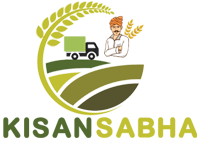Data-driven farming has an impact on the agricultural scene. It causes a revolution in how farmers grow food and helps ensure food security across the globe. As population growth, climate change, and limited resources put food supply at risk, using data becomes crucial. When farmers adopt new tech and study farm data, they can make better choices and step up their methods. This article explores why data-driven farming matters to food security, boosts farm output, and promotes practices that last.
What is Data-Driven Farming?
Data-driven farming is more than just keeping records. It means blending data and tech into today’s farming. This method involves collecting info on different things, like weather trends and soil health. When farmers use this data, they can fine-tune their work and get better harvests.
Importance of Data in Modern Agriculture
Farmers can’t rely on gut feelings alone anymore. New tech gives them tons of information to work with. Data plays a huge part in today’s farming. It helps farmers keep an eye on how well their crops are doing, see pest problems coming, and use their resources better. Farming based on data acts like a beacon showing farmers the way through the ups and downs of growing things.
Enhancing Agricultural Productivity Through Data
Collecting and Analyzing Agricultural Data
Farmers no longer write observations in notebooks. They now use sensors, drones, and high-tech tools to collect information. This information helps them spot patterns and trends. However, understanding what helps crops grow allows farmers to make choices based on facts to increase their output.
Precision Farming Techniques
In the past, farmers treated all fields the same way. Precision farming now customizes methods for different areas of land. However, using insights from data, farmers create unique plans for planting adding fertilizer, and watering. This focused approach gives crops what they need when they need it making the most of yields and resources.
Data-Driven Pest and Disease Management
Pests and diseases create big problems for farmers. But farming based on data offers answers. When farmers study information about pest numbers, weather, and how healthy plants are, they can guess when outbreaks might happen and deal with them. However, this way of staying ahead means they don’t need to use as many pesticides and don’t lose as many crops. As a result, farmers keep more money while making sure the food stays safe and good for people to eat.
Role of Data-Driven Farming in Ensuring Food Security
Challenges to Global Food Security
Making sure there’s enough food for everyone is a big deal worldwide. As more people are born and the climate changes, it gets harder to grow enough food for everybody. Also, these old ways of farming just can’t keep up with these new problems. These innovative solutions are needed, and data-driven farming presents a viable option.
Addressing Food Security Concerns
Data-driven farming has a crucial impact on combating food insecurity. It helps maintain a steady food supply by boosting output, saving resources, and stopping crop losses. However, by using data and technology, farmers can adjust to changing conditions, lower risks, and feed people worldwide.
Also Read:- Top 5 Banks of Agricultural Loans
Using Data Analytics to Manage Resources
Making the Most of Water Use Through Data Study
Water shortage is a big worry in farming. Data-driven farming can make water use better. Farmers can improve how they water crops by looking at soil wetness, weather predictions, and what plants need. Therefore, this way saves water, cuts down on energy use, and reduces costs.
Data-Driven Fertilizer Management
Fertilizers are essential for agricultural growth, but excessive use can be harmful to the environment. Farmers that use data to control fertilizer can apply it more correctly depending on soil nutrient levels and crop demands. However, this strategy promotes sustainable farming and preserves the environment by limiting overuse and lowering runoff.
Energy Efficiency in Agriculture With Data
Data-driven farming goes beyond just crops; it also covers energy efficiency. Farmers can find ways to improve by looking at data on energy use. For example, they might use solar power to run irrigation systems or handle equipment use better. Also, these steps lead to smaller carbon footprints in farming practices.
Collaboration and Knowledge Sharing
To make the most of data-driven farming, working together is crucial. Farmers need to share their knowledge and learn from each other. By creating a supportive community, they can use the newest data-driven methods. Therefore, this teamwork will improve farming and help ensure there’s enough food for everyone.
Conclusion
Data-driven farming has the potential to revolutionize agriculture and ensure food security. Farmers may grow better crops while simultaneously benefiting the environment by employing data analysis, smart farming practices, and effective resource management. However, to fully profit from this, we must address issues such as data availability, privacy protection, and digital tool training for farmers. This allows us to establish a more secure and sustainable agricultural future.





